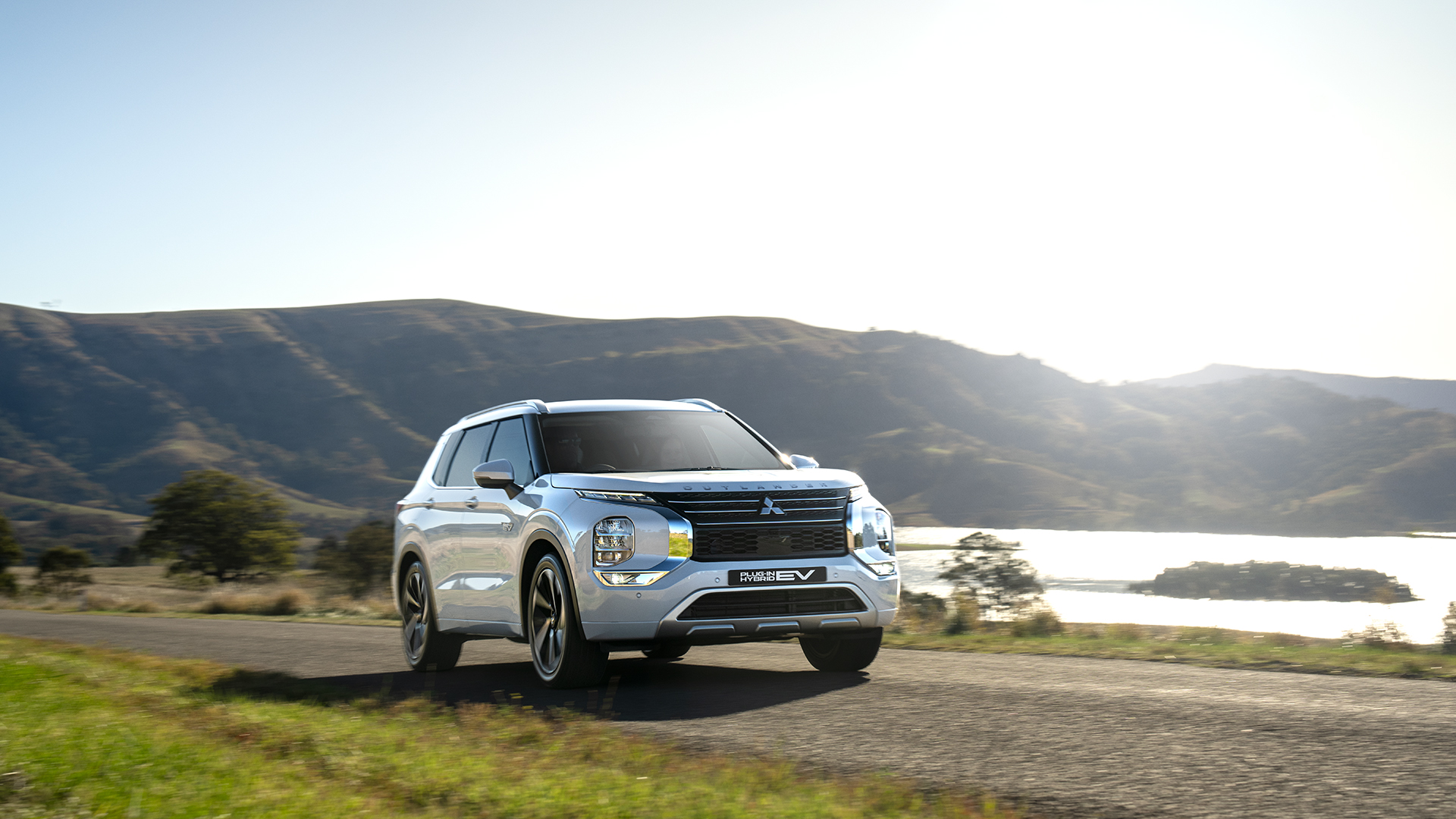Meet the car that can not only run on free solar, but power your entire home.
It’s interesting to think of the sun as a kind of vast, patient teacher, waiting for us to work out just how useful it can be, aside from giving us light and making everything on Earth grow. Last century, we got quite excited when we worked out that we could put a couple of panels on our roofs to heat our hot water. Today many houses use solar to provide their electricity and recently we’ve started plugging in our electric vehicles (EVs) to run on sunlight as well.
The arrival of the latest generation of smart vehicles, such as Mitsubishi’s Outlander Plug-In Hybrid EV (PHEV) – which can switch between its petrol engine and battery-powered twin electric motors – provides the opportunity to power our lives with clean energy.
Imagine a world in which you can charge up your car’s batteries using your solar panels, and then use that power not just for transport, but to run your house for several days – free and clean.
Mitsubishi’s PHEVs are at the cutting edge of the latest car tech thanks to vehicle-to-load (V2L), vehicle-to-home (V2H) and vehicle-to-grid (V2G) capabilities, all of which have the potential to transform how we use energy and shine a light on the fact that EVs and PHEVs are, essentially, powerful battery packs on wheels.
While V2L will let you charge or operate an appliance via your EV or PHEV’s battery – a blessing if you want to take a fridge, or even a TV, with you when camping – V2H is another thing entirely, allowing you to use the car’s battery to power your home.
Laura Jones, a senior analyst at the Australian National University’s College of Engineering and Computer Science, working across its battery storage and grid integration program, believes people need to reframe how they view their vehicles.
“If you look at how we use our cars, they tend to spend most of their time parked,” Jones says. “So using V2H is a way of making it so that the car can work for you, even when you’re not driving it.”
Using a bi-directional charger that can put energy in your car and then take it back out again, you can power your home via V2H, or help stabilise the electricity grid during periods of high demand, via V2G.
“With V2G, if you lose a generator or load somewhere in the energy system, the vehicles will start charging or discharging to counteract that disturbance,” she says. “It’s a pretty critical service for keeping the system stable, because electricity has to match generation and demand continuously in real time.”

The concept of V2H and V2G becomes even more attractive when you use free, renewable solar energy, which can be harnessed to charge your EV or PHEV, which in turn powers your home, reducing your energy and fuel bills to zero.
“You’ve just got to look at how much solar there is out there,” Jones says. “We’ve got 40% [of homes with] rooftop solar or more in Queensland and South Australia – on a world scale, that’s huge.”
Mitsubishi has combined the benefits of V2H, V2G and solar power to create the future-focused Dendo Drive House concept, a home-energy ecosystem that comprises an EV/PHEV, a bi-directional charger, solar panels and a home battery.
Tim Clarke, eMobility strategy manager at Mitsubishi Motors Australia, says the Dendo Drive House concept was created to showcase the capabilities of existing technology.
“We have such abundant renewable-energy resources in this country, so it totally makes sense for us to use that,” he says. “A home energy system that allows you to capture and store renewable energy when it is abundant, and then use it when you need it in your home or in your car is a great fit for Australians. It will challenge us to think about our day-to-day lives and how energy can be integrated into that.”
For those with range anxiety around EVs, Clarke points out that PHEVs, such as Mitsubishi’s Outlander, are a best-of-both-worlds solution, because they can run in pure EV mode, or engage their petrol-electric hybrid drive system for longer trips.
“We feel that PHEVs are a really a good solution for Australia right now; the new Outlander Mitsubishi Plug-in Hybrid EV has a 20kWh battery that allows you to travel 84km in all-electric mode, which covers most users’ daily commuting requirements,” he says.
“In Australia, we have some of the longest distances between populated areas in the world, and we don’t have charging infrastructure in a lot of those places. Because PHEV is an EV for daily commute, and a petrol-electric hybrid for long distances, current charging infrastructure inadequacies are not an issue. It really gives you the best of both worlds.”
With the ability to provide energy to your home or even emergency power in a disaster-relief scenario (all by harnessing free solar, if you so choose), today’s EVs are not only helping consumers with rising energy costs, but also helping the planet.
As the sun might say, it’s a bright idea.
Explore the Mitsubishi Outlander Plug-in Hybrid EV here.
Originally produced content by Guardian Labs Australia to a brief agreed with and paid for by Mitsubishi Motors Australia.
